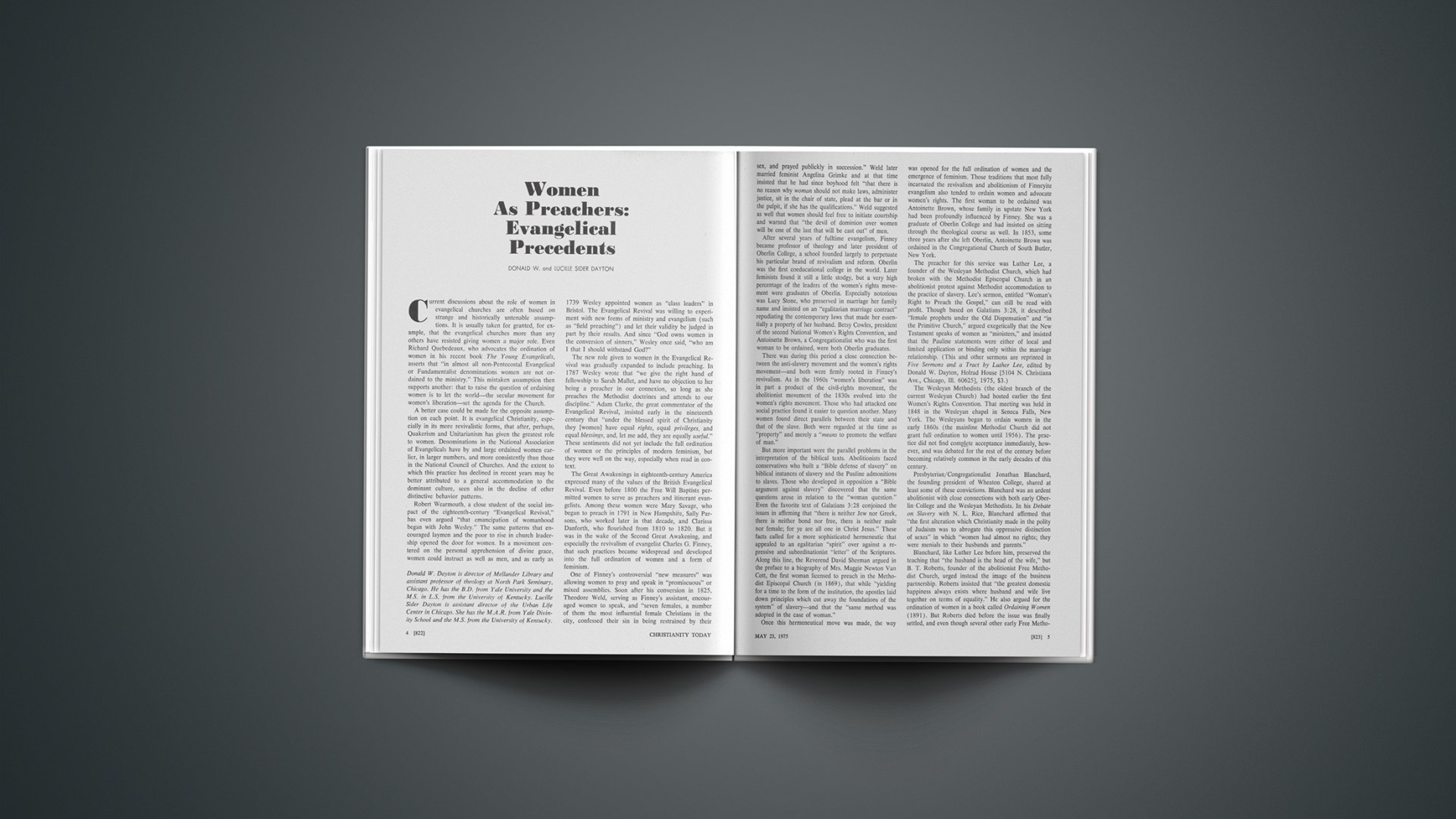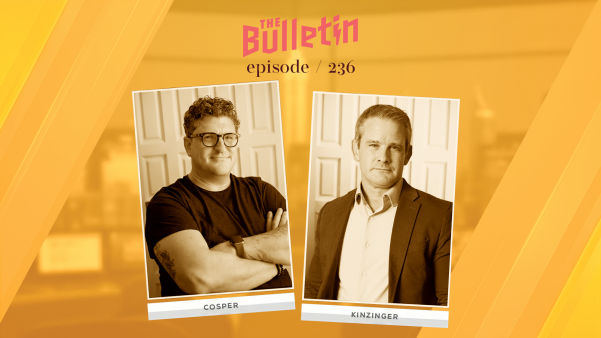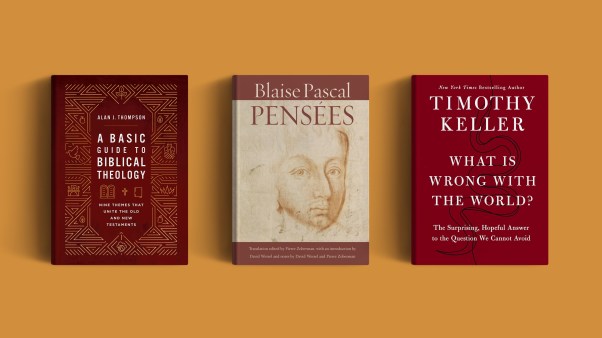Current discussions about the role of women in evangelical churches are often based on strange and historically untenable assumptions. It is usually taken for granted, for example, that the evangelical churches more than any others have resisted giving women a major role. Even Richard Quebedeaux, who advocates the ordination of women in his recent book The Young Evangelicals, asserts that “in almost all non-Pentecostal Evangelical or Fundamentalist denominations women are not ordained to the ministry.” This mistaken assumption then supports another: that to raise the question of ordaining women is to let the world—the secular movement for women’s liberation—set the agenda for the Church.
A better case could be made for the opposite assumption on each point. It is evangelical Christianity, especially in its more revivalistic forms, that after, perhaps, Quakerism and Unitarianism has given the greatest role to women. Denominations in the National Association of Evangelicals have by and large ordained women earlier, in larger numbers, and more consistently than those in the National Council of Churches. And the extent to which this practice has declined in recent years may be better attributed to a general accommodation to the dominant culture, seen also in the decline of other distinctive behavior patterns.
Robert Wearmouth, a close student of the social impact of the eighteenth-century “Evangelical Revival,” has even argued “that emancipation of womanhood began with John Wesley.” The same patterns that encouraged laymen and the poor to rise in church leadership opened the door for women. In a movement centered on the personal apprehension of divine grace, women could instruct as well as men, and as early as 1739 Wesley appointed women as “class leaders” in Bristol. The Evangelical Revival was willing to experiment with new forms of ministry and evangelism (such as “field preaching”) and let their validity be judged in part by their results. And since “God owns women in the conversion of sinners,” Wesley once said, “who am I that I should withstand God?”
The new role given to women in the Evangelical Revival was gradually expanded to include preaching. In 1787 Wesley wrote that “we give the right hand of fellowship to Sarah Mallet, and have no objection to her being a preacher in our connexion, so long as she preaches the Methodist doctrines and attends to our discipline.” Adam Clarke, the great commentator of the Evangelical Revival, insisted early in the nineteenth century that “under the blessed spirit of Christianity they [women] have equal rights, equal privileges, and equal blessings, and, let me add, they are equally useful.” These sentiments did not yet include the full ordination of women or the principles of modern feminism, but they were well on the way, especially when read in context.
The Great Awakenings in eighteenth-century America expressed many of the values of the British Evangelical Revival. Even before 1800 the Free Will Baptists permitted women to serve as preachers and itinerant evangelists. Among these women were Mary Savage, who began to preach in 1791 in New Hampshire, Sally Parsons, who worked later in that decade, and Clarissa Danforth, who flourished from 1810 to 1820. But it was in the wake of the Second Great Awakening, and especially the revivalism of evangelist Charles G. Finney, that such practices became widespread and developed into the full ordination of women and a form of feminism.
One of Finney’s controversial “new measures” was allowing women to pray and speak in “promiscuous” or mixed assemblies. Soon after his conversion in 1825, Theodore Weld, serving as Finney’s assistant, encouraged women to speak, and “seven females, a number of them the most influential female Christians in the city, confessed their sin in being restrained by their sex, and prayed publickly in succession.” Weld later married feminist Angelina Grimke and at that time insisted that he had since boyhood felt “that there is no reason why woman should not make laws, administer justice, sit in the chair of state, plead at the bar or in the pulpit, if she has the qualifications.” Weld suggested as well that women should feel free to initiate courtship and warned that “the devil of dominion over women will be one of the last that will be cast out” of men.
After several years of fulltime evangelism, Finney became professor of theology and later president of Oberlin College, a school founded largely to perpetuate his particular brand of revivalism and reform. Oberlin was the first coeducational college in the world. Later feminists found it still a little stodgy, but a very high percentage of the leaders of the women’s rights movement were graduates of Oberlin. Especially notorious was Lucy Stone, who preserved in marriage her family name and insisted on an “egalitarian marriage contract” repudiating the contemporary laws that made her essentially a property of her husband. Betsy Cowles, president of the second National Women’s Rights Convention, and Antoinette Brown, a Congregationalist who was the first woman to be ordained, were both Oberlin graduates.
There was during this period a close connection between the anti-slavery movement and the women’s rights movement—and both were firmly rooted in Finney’s revivalism. As in the 1960s “women’s liberation” was in part a product of the civil-rights movement, the abolitionist movement of the 1830s evolved into the women’s rights movement. Those who had attacked one social practice found it easier to question another. Many women found direct parallels between their state and that of the slave. Both were regarded at the time as “property” and merely a “means to promote the welfare of man.”
But more important were the parallel problems in the interpretation of the biblical texts. Abolitionists faced conservatives who built a “Bible defense of slavery” on biblical instances of slavery and the Pauline admonitions to slaves. Those who developed in opposition a “Bible argument against slavery” discovered that the same questions arose in relation to the “woman question.” Even the favorite text of Galatians 3:28 conjoined the issues in affirming that “there is neither Jew nor Greek, there is neither bond nor free, there is neither male nor female; for ye are all one in Christ Jesus.” These facts called for a more sophisticated hermeneutic that appealed to an egalitarian “spirit” over against a repressive and subordinationist “letter” of the Scriptures. Along this line, the Reverend David Sherman argued in the preface to a biography of Mrs. Maggie Newton Van Cott, the first woman licensed to preach in the Methodist Episcopal Church (in 1869), that while “yielding for a time to the form of the institution, the apostles laid down principles which cut away the foundations of the system” of slavery—and that the “same method was adopted in the case of woman.”
Once this hermeneutical move was made, the way was opened for the full ordination of women and the emergence of feminism. Those traditions that most fully incarnated the revivalism and abolitionism of Finneyite evangelism also tended to ordain women and advocate women’s rights. The first woman to be ordained was Antoinette Brown, whose family in upstate New York had been profoundly influenced by Finney. She was a graduate of Oberlin College and had insisted on sitting through the theological course as well. In 1853, some three years after she left Oberlin, Antoinette Brown was ordained in the Congregational Church of South Butler, New York.
The preacher for this service was Luther Lee, a founder of the Wesleyan Methodist Church, which had broken with the Methodist Episcopal Church in an abolitionist protest against Methodist accommodation to the practice of slavery. Lee’s sermon, entitled “Woman’s Right to Preach the Gospel,” can still be read with profit. Though based on Galatians 3:28, it described “female prophets under the Old Dispensation” and “in the Primitive Church,” argued exegetically that the New Testament speaks of women as “ministers,” and insisted that the Pauline statements were either of local and limited application or binding only within the marriage relationship. (This and other sermons are reprinted in Five Sermons and a Tract by Luther Lee, edited by Donald W. Dayton, Holrad House [5104 N. Christiana Ave., Chicago, Ill. 60625], 1975, $3.)
The Wesleyan Methodists (the oldest branch of the current Wesleyan Church) had hosted earlier the first Women’s Rights Convention. That meeting was held in 1848 in the Wesleyan chapel in Seneca Falls, New York. The Wesleyans began to ordain women in the early 1860s (the mainline Methodist Church did not grant full ordination to women until 1956). The practice did not find complete acceptance immediately, however, and was debated for the rest of the century before becoming relatively common in the early decades of this century.
Presbyterian/Congregationalist Jonathan Blanchard, the founding president of Wheaton College, shared at least some of these convictions. Blanchard was an ardent abolitionist with close connections with both early Oberlin College and the Wesleyan Methodists. In his Debate on Slavery with N. L. Rice, Blanchard affirmed that “the first alteration which Christianity made in the polity of Judaism was to abrogate this oppressive distinction of sexes” in which “women had almost no rights; they were menials to their husbands and parents.”
Blanchard, like Luther Lee before him, preserved the teaching that “the husband is the head of the wife,” but B. T. Roberts, founder of the abolitionist Free Methodist Church, urged instead the image of the business partnership. Roberts insisted that “the greatest domestic happiness always exists where husband and wife live together on terms of equality.” He also argued for the ordination of women in a book called Ordaining Women (1891). But Roberts died before the issue was finally settled, and even though several other early Free Methodist bishops were distinctly feminist in conviction, their church allowed women to be ordained only as deacons until 1974, when this prohibition was discarded.
Another early evangelical leader holding to the same complex of convictions was A. J. Gordon, a Baptist who was the major figure behind present-day Gordon College and Gordon-Conwell Theological Seminary. Ernest Gordon, Gordon’s son and biographer, said his father was “bred in the strictest sect of the abolitionists” and “advocated their [women’s] complete enfranchisement and their entrance into every political and social privilege enjoyed by men.” Gordon argued for the “Ministry of Women” in an 1894 article in the Missionary Review of the World.
Despite his abolitionist background, Gordon argued primarily not from a doctrine of human equality but on the basis of his doctrine of the Holy Spirit. Gordon insisted that in this “dispensation of the Spirit” inaugurated at Pentecost, the prophecy of Joel (quoted in Acts 2) that “your sons and your daughters shall prophesy” finds fulfillment. He then used this text as the hermeneutical key by which to interpret the rest of the New Testament. Gordon commented that when one starts from this point it is “both a relief and a surprise to discover how little authority there is in the Word for repressing the witness of women in the public assembly, or for forbidding her to herald the Gospel to the unsaved.”
But this argument had been developed thirty-five years earlier by Methodist lay evangelist Phoebe Palmer in a 421-page treatise on The Promise of the Spirit (1859), the whole of which was devoted to the explication of this “neglected specialty of the latter days.” Mrs. Palmer was the major force behind the nineteenth-century “holiness revival” that preserved a subtle synthesis of Wesleyanism and the revivalism of Finney. By the end of the century this movement had produced a large number of new denominations, most of which were ardently committed to the ordained ministry of women.
It was under the influence of Phoebe Palmer during an evangelistic crusade in England that Catherine Booth felt called to preach. She met resistance to this course with a number of articles and a booklet on Female Ministry. Catherine had earlier refused to marry William Booth until he capitulated to her egalitarian principles. Though the founding of the Salvation Army is usually attributed to William, Catherine was at least as important and was apparently the better preacher. Thousands attended her “revival services,” sometimes advertised by the slogan “Come and Hear a Woman Preach.” Catherine Booth carried her principles into the home and “tried to grind it into my boys that their sisters were just as intelligent and capable as themselves.” She insisted that “Jesus Christ’s principles were to put women on the same platform as men, although I am sorry to say that His apostles did not always act upon it.” Such egalitarian themes were built into the structure of the Salvation Army from the very beginning and are still largely operative today.
Another woman who felt the influence of Phoebe Palmer was Francis Willard, the founder and long-time president of the World’s Women’s Christian Temperance Union. Miss Willard felt she had a divine call into the suffrage struggle and served for a while as an assistant to evangelist D. L. Moody, speaking on temperance and suffrage in the Moody crusades. In 1888 she wrote Woman in the Pulpit, a sophisticated and exegetical defense of the ministry of women.
Phoebe Palmer’s basic argument was also taken in a distinctly feminist direction by many of her followers. Mrs. Willing Fowler, a Methodist, wrote a series of articles just before the turn of the century in The Guide to Holiness (which Phoebe Palmer had edited for years) arguing that “Pentecost laid the axe at the root of the tree of social injustice. The text of Peter’s sermon that marvelous day was the keynote of woman’s enfranchisement.” Or again, “when the Pentecostal light shines most brightly … [women] are principals, professors, college presidents, and are admitted to all the learned professions.… They have equal rights with men by whose side they labor for God’s glory.”
W. B. Godbey, a scholarly Methodist evangelist associated closely with the early years of Asbury College, wrote in 1891 a pamphlet called Woman Preacher, arguing that “it is a God-given, blood-bought privilege, and bounden duty of the women as well as the men, to preach the gospel.” Godbey insisted that the Pauline prohibitions about women’s speaking in the church were given to maintain order and not to keep women from speaking, and affirmed that “I don’t know a Scripture in all the Bible by whose perversion the devil has dragged more souls into hell than this.”
Many of the evangelical churches founded in the late nineteenth and early twentieth centuries explicitly endorsed and practiced the ordination of women. The Church of God (Anderson, Indiana), founded in 1881, had many women among its early leaders and preachers, perhaps as many as 20–25 per cent. The denomination’s historian reports that “no other movement, either religious or secular, in this period of American history except perhaps the suffrage movement itself, had such a high percentage of women leaders whose contribution was so outstanding.” The Church of the Nazarene, founded in 1894, wrote into its original constitution a guarantee of the right of women to preach. This practice was later defended in Women Preachers (1905), in which a dozen women reported their testimonies and calls to the ministry. In early years as many as one-fifth of the ministers in the Church of the Nazarene were women.
One of the founders of the Pilgrim Holiness Church was Seth Cook Rees, the father of Paul Rees, an important leader in early years of the National Association of Evangelicals. Rees co-pastored with his wives and argued that one of the marks of the ideal church is that it “is without distinction as to sex.” He said:
Nothing but jealousy, prejudice, bigotry, and a stingy love for bossing in men have prevented woman’s public recognition by the church. No church that is acquainted with the Holy Ghost will object to the public ministry of women. We know scores of women who can preach the Gospel with a clearness, a power, and an efficiency seldom equalled by men.
We could go on and trace these themes along a number of routes. It is largely recognized that Pentecostalism continued the focus on Pentecost and the doctrine of the Holy Spirit that supported a role for women in the ministry in some contexts. Pentecostalism has preserved this practice from early evangelist Mary Woodworth-Etter through Aimee Semple McPherson, founder of the International Church of the Foursquare Gospel, to Kathryn Kuhlman of today. Similar statements about the ministry of women were left by both Mr. and Mrs. Reader Harris, spiritual leaders in England at the turn of the century. Revell published in 1926 a detailed treatise on the Bible Status of Women by Lee Anna Starr, for years pastor of the college church (Methodist Protestant) in Adrian, Michigan. Jessie Penn-Lewis of England wrote in 1919 a book on The “Magna Charta” of Women According to the Scriptures. This was in turn based on God’s Word to Women by the American Katherine Bushnell.
There is more, but this is enough to indicate the extent and variety of the evangelical precedents for supporting the right of women to preach and to be ordained. During the last couple of centuries evangelicals led the way in granting a major role to women in the churches.
It is true, however, that the practice of these principles has declined in recent years, especially since World War II. (In the Church of the Nazarene, for example, where in 1908 20 per cent of the ministers were women, the figure was only 6 per cent in 1973. A study of the American Baptists revealed that even from 1965 to 1971 the number of women in administrative positions decreased more than 50 per cent). No doubt there are many reasons for this. One is the increasing “professionalization” of the ministry. With the growth of evangelical theological seminaries and increasingly sophisticated requirements for the ministry, women in general and lay people in general have both found their roles in the churches reduced. These trends have coincided with the breakdown of distinctive cultural and behavioral patterns that helped sustain separate subcultures in which patterns such as the ministry of women were preserved against a hostile culture. Successive generations, embarrassed by such “strange” and “unnatural” practices, have gradually accommodated to the dominant culture, becoming in some ways the sort of churches against which their forefathers and foremothers protested.










